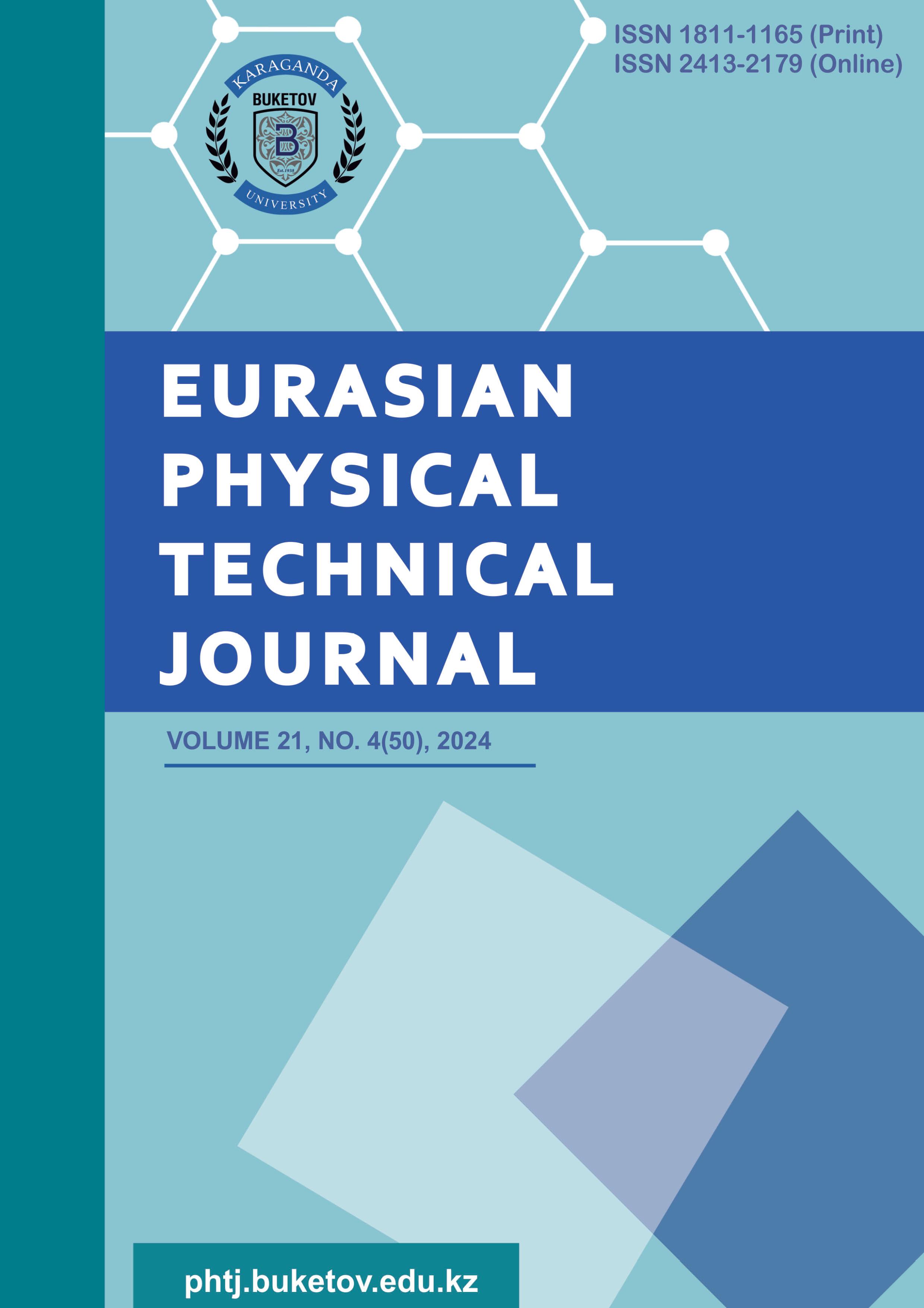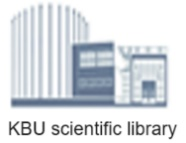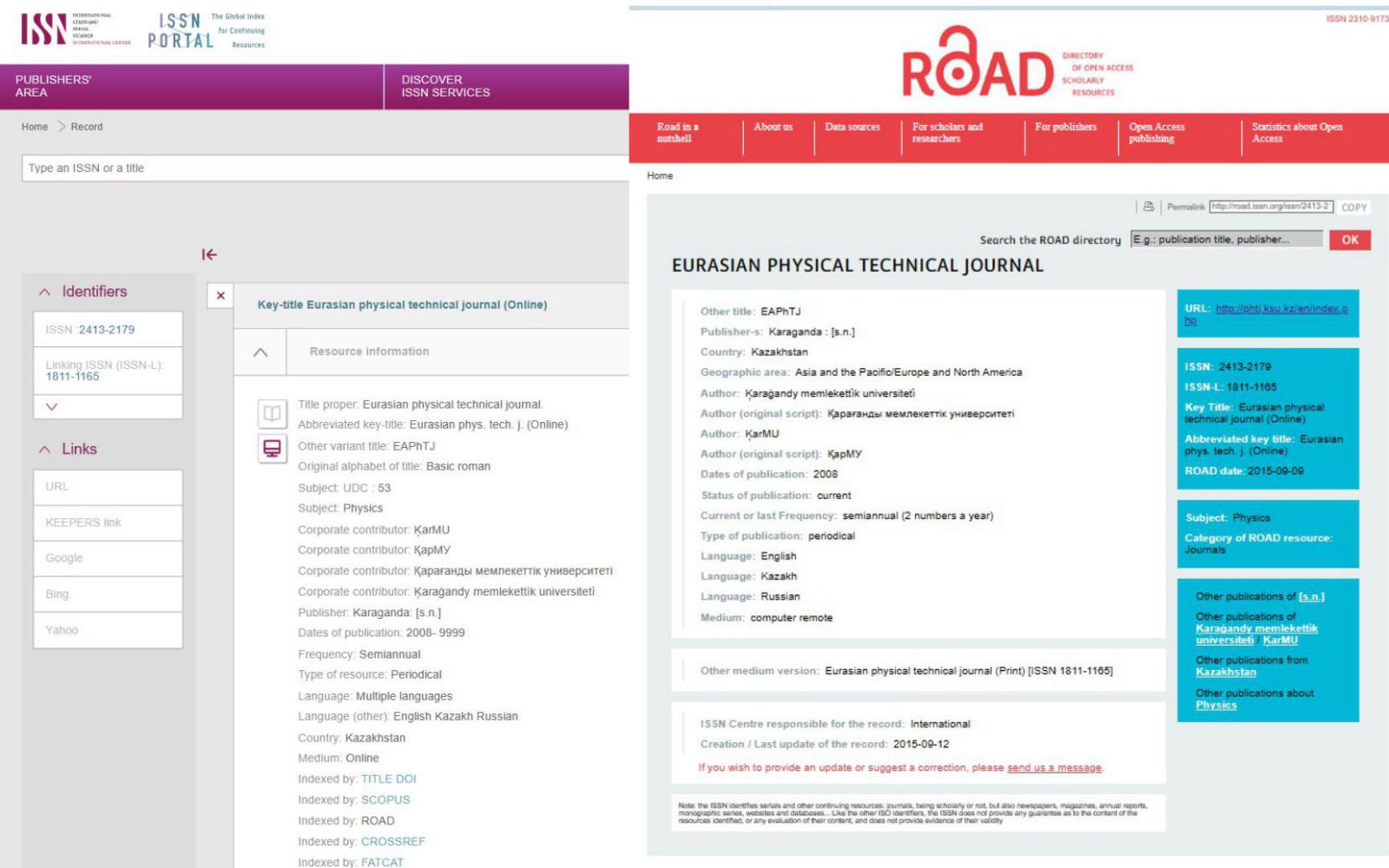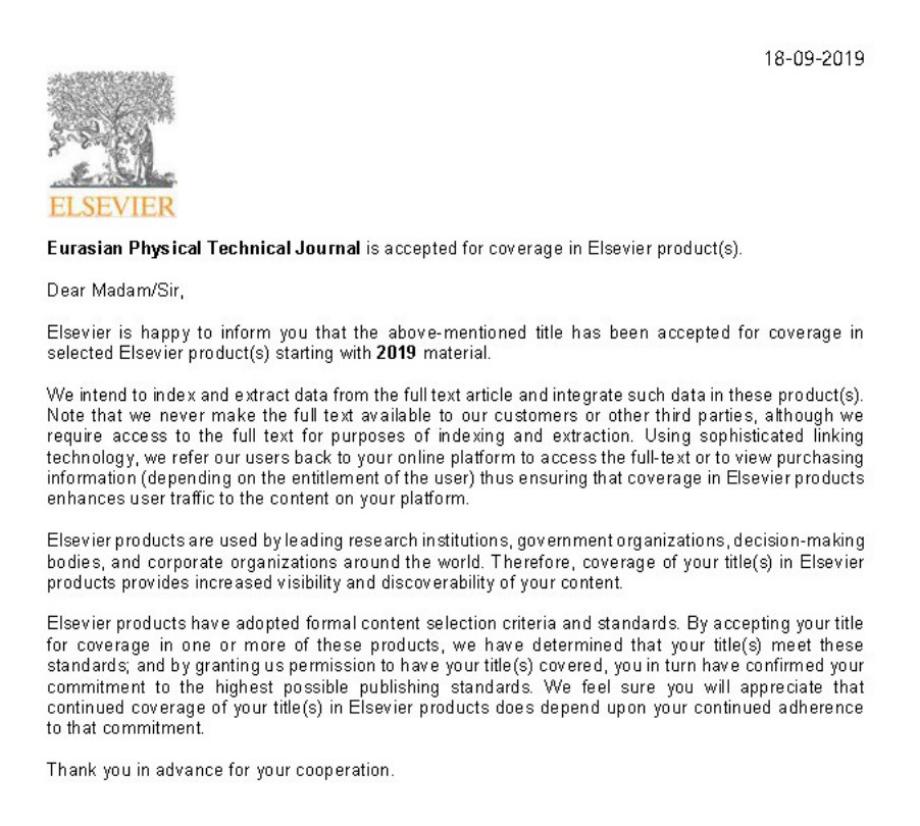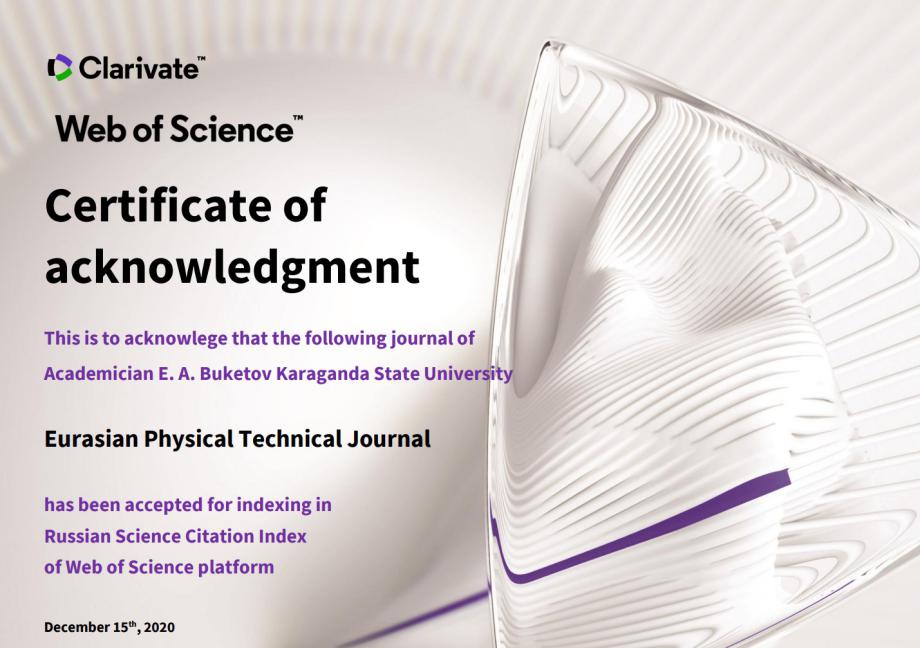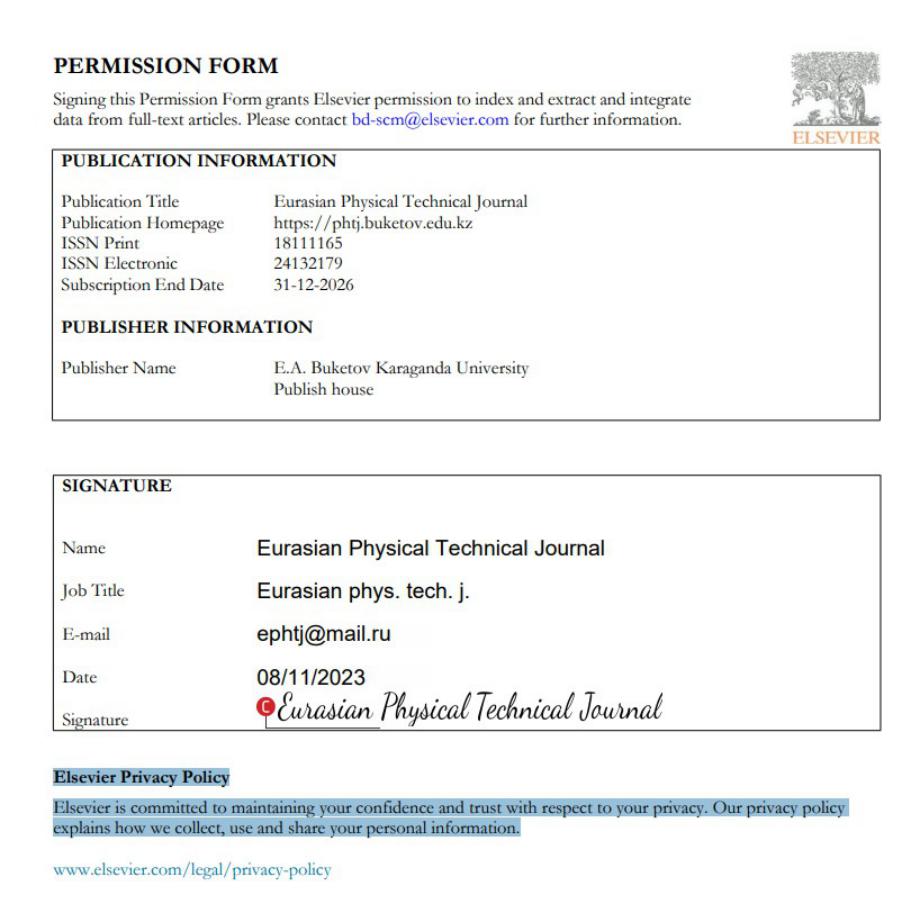ANALYTICAL DESCRIPTION OF THE POTENTIAL OF ELECTROSTATIC MULTIPOLE SYSTEMS BASED ON A CONDUCTING CIRCULAR CYLINDER
DOI:
https://doi.org/10.31489/2024No4/140-148Keywords:
multipole system, potential, conducting circular cylinder, equipotential lines, anti-resonance systemAbstract
An urgent task of corpuscular optics and scientific instrumentation is the creation of new methods for calculating the physical and instrumental parameters of mass spectrometers. Leveraging the increased capabilities of computational technology, these methods provide a solid basis for the design and calculation of instruments with improved analytical capabilities. In this work, a method was developed for calculating the electrostatic field of multipole systems based on a conducting circular cylinder. This method uses the broad analytical capabilities of the theory of functions of a complex variable (TFCV). Analytical expressions are found for the electrostatic field potential of a quadrupole system for the case of infinitely narrow gaps between the electrodes. Analytical expressions for the derivatives of the potential are also obtained. A study was carried out of the influence of the finite size of the gaps between the electrodes on the field configuration. For this purpose, numerical simulations of planar electric fields satisfying the Laplace equation were carried out. The calculation of the electrostatic field potential was carried out using the boundary element method in two stages. First, the distribution of electric charge at the boundary was calculated according to the known boundary potential distribution, that is, the “inverse” problem was solved. Then, using the found values of the charge distribution and the found potential values, the “direct” problem was solved. To solve this problem, a method was developed for solving integral equations with singular and quasi-singular kernels, which provides high accuracy in field calculations for electron-optical systems (EOS) with rectilinear boundaries. The inaccuracies in the calculations resulted solely from rounding mistakes. In the case of an Equation of State (EOS) characterized by curved boundaries, the precision is dependent exclusively on how accurately the boundaries are represented using linear segments. For the purpose of segmenting the curved borders of the second-order EOS, these boundaries were broken down into arcs with an angular measurement not exceeding one degree.
References
Kambarova Z. (2023) Expansion of the functional capacities of electrostatic mirror analyzers for electron spectroscopy. Eastern-European Journal of Enterprise Technologies, 5(5(125)), 53–61. DOI: 10.15587/1729-4061.2023.289781. DOI: https://doi.org/10.15587/1729-4061.2023.289781
Saulebekov A.O., Kambarova Zh.T., Omarova G.S. (2023) Miniature highly sensitive electron spectrometer for the analysis of corpuscular fluxes. Eurasian Physical Technical Journal, 20(2-44), 112–117. DOI: 10.31489/2023NO2/112-117. DOI: https://doi.org/10.31489/2023NO2/112-117
Preikszas D., Rose H. (1997) Correction properties of electron lenses and mirrors. Electron microscopy, 46, 1, 1–9. DOI: 10.1093/oxfordjournals.jmicro.a023484. DOI: https://doi.org/10.1093/oxfordjournals.jmicro.a023484
Szilagyi M. (1990) Electronic and ion optics. Moscow, Mir, 639 p. Available at: https://www.libex.ru/detail/ book491431.html [in Russian]
Hawkes P.W., Spence J.C.H. (2019) Springer Handbook of Microscopy, Springer Handbooks, Springer Nature Switzerland AG, 1543 р. DOI: 10.107/978-3-030-00069-1.
Paul V. (1990) Electromagnetic traps for charged and neutral particles. UFN, 60, 12, 109–127. DOI: 10.3367/UFNr.0160.199012d.0109. DOI: https://doi.org/10.3367/UFNr.0160.199012d.0109
Douglas D.J., Frank A.J., Mao D.M. (2005) Linear ion traps in mass spectrometry. Mass Spectrom. Rev., 24 (1), 1–29. DOI: 10.1002/mas.20004. DOI: https://doi.org/10.1002/mas.20004
Hager J.W. (2002) A new linear ion trap mass spectrometer. Rapid Commun. Mass Spectrom., 16, 512–526. DOI: 10.1002/rcm.607. DOI: https://doi.org/10.1002/rcm.607
March R.E, Todd J.F.J. (2005) Quadrupole Ion Trap Mass Spectrometry. Ed. by J.D. Winefordner. Vol. 165., P. 1–78. DOI: 10.1002/0471717983 DOI: https://doi.org/10.1002/0471717983
Qiao H., Gao C., Mao D., Konenkov N., Douglas D.J. (2011) Spacecharge effects with mass selective axial ejection from a linear quadrupole ion trap. Rapid Commun. Mass Spectrom., 25, 3509–3520. DOI: 10.1002/rcm.5255. DOI: https://doi.org/10.1002/rcm.5255
Amini J.M., Britton J., Leibfried D., Wineland D.J. (2011) Microfabricated Chip Traps for Ions Atom Chips. Ed. by J. Reichel, V. Vuletic WILEY-VCH Verlag GmbH & Co.´KGaA, Weinheim. DOI: https://doi.org/10.1002/9783527633357.ch13
DOI: 10.48550/arXiv.0812.3907.
Douglas D.J., Konenkov N.V.(2012) Ion Cloud Model for a Linear Quadrupole Ion Trap. Euro. J. Mass Spectrom., 18, 419–429. DOI: 10.1255/ejms.1200. DOI: https://doi.org/10.1255/ejms.1200
Douglas D.J., Berdnikov A.S., Konenkov N.V. (2015) The effective potential for ion motion in a radio frequency quadrupole field revisited. Int. J. Mass Spectrom., 377, 345–354. DOI:10.1016/j.ijms.2014.08.009. DOI: https://doi.org/10.1016/j.ijms.2014.08.009
Rozhdestvensky Yu.V., Rudy S.S. (2017) Linear ion trap with a deterministic voltage of a general form. Technical Physics, 87, 4, 625–632. DOI: 10.1134/s1063784217040259. DOI: https://doi.org/10.1134/S1063784217040259
Dawson R.H. (1976) Quadrupole Mass Spectrometry and its Application, Amsterdam: Elsevier, 1976. Available at: Quadrupole Mass Spectrometry and Its Applications - 1st Edition | Elsevier Shop DOI: https://doi.org/10.1016/B978-0-444-41345-1.50006-X
Baumeester D., Eckert A., Zeilinger A. (2002) Physics of quantum information, Moscow: Postmarket, 375 p. Available at: https://www.amazon.com/Physics-Quantum-Information-Cryptography-Teleportation/dp/3540667784
Lavrentiev M.A., Shabat B.V. (1976) Methods of the theory of functions of a complex variable, Moscow: Nauka, 716 p. Available at: https://lib.ysu.am/open_books/93130.pdf
Spivak-Lavrov I.F., Shugaeva T.Zh., Seiten A.B. (2023) Anti-resonance quadrupole system based on a circular conducting cylinder. Recent Contributions to Physics, №4 (87), 23-29. DOI:10.26577/RCPh.2023.v87.i4.03. [in Russian] DOI: https://doi.org/10.26577/RCPh.2023.v87.i4.03
Cheng A. H.-D., Cheng D.T. (2005) Heritage and early history of the boundary element method. Engineering Analysis with Boundary Elements, 29, 268–302. DOI: 10.1016/j.enganabound.2004.12.001. DOI: https://doi.org/10.1016/j.enganabound.2004.12.001
Brebbia C.A., Telles J.C.F., Wrobel L.C. (2012) Boundary Element Techniques: Theory and Applications in Engineering, London: Springer, 464 p.
Gurov V.S., Saulebekov A.O., Trubitsyn A.A. (2015) Analytical, Approximate-Analytical and Numerical Methods in the Design of Energy Analyzers, Advances in Imaging and Electron Physics, ed. Peter W. Hawkes, Vol. 192, AIEP, UK: Academic Press, 209 p. DOI: 10.1016/S1076-5670(15)00103-2. DOI: https://doi.org/10.1016/S1076-5670(15)00103-2
Downloads
Received
Revised
Accepted
Published online
How to Cite
Issue
Section
License

This work is licensed under a Creative Commons Attribution-NonCommercial-NoDerivatives 4.0 International License.

